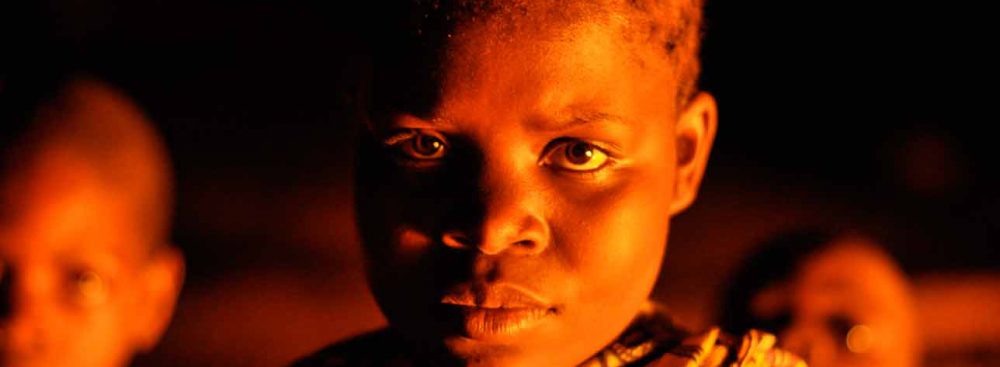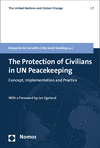International peacebuilding efforts regularly fail to be effective for a variety of reasons such as lack of political will and resources, complex dynamics of conflict, and vested interests. Instead of following these more established pathways of peacebuilding research, Séverine Autesserre has opted for investigating the way international peacebuilding interventions function on the ground. Her new book – Peaceland – is an ethnography of international interveners, explaining how their everyday impacts peacebuilding outcomes. The book draws on the author’s extensive, almost fifteen-year experience as a researcher and practitioner in various peacebuilding contexts. While most of the ethnographic research was conducted in the Democratic Republic of Congo (DRC), Autesserre tested her global argument and its underlying observations in six other theaters of intervention.
Building on Raymond Apthorpe and the recent Anthropology of aid, Autesserre defines ‘Peaceland’ as a separate world with its own time, space and economics, and as she insists, its own “system of meaning”. The author explains that practices, habits and narratives shape interveners’ understanding of the world as well as their perception of appropriate, legitimate and effective actions. In return, these actions reproduce and reinforce existing practices, habits and narratives. Based on the notion that outsiders are needed to solve the complicated problems of conflict-ridden states, interveners, for instance, assume the superiority of thematic expertise over local knowledge. This attitude leads to, and is reinforced by, a number of practices. Autesserre argues that it results in the depreciation of local voices and input, and that it inherently gives interveners the moral high ground, sometimes leading to condescending behavior. She also states that within international circles, the acquirement of local expertise is disincentivized: It is not a required qualification for recruitment and the quick turnover rate does not make it worthwhile. The head of recruitment in a peacebuilding institution once told me that country expertise is generally not helpful as it makes implementation much more difficult. In practice this means that many of my colleagues in the DRC did not master French and almost no one spoke Swahili or Lingala. They largely remained unaware about the country’s history, the political dynamics in Kinshasa or background of armed groups. Most of them, however, had served in other conflict areas and knew a thing or two about international organizations, their terminologies and activities.
The inhabitants of Peaceland normally do not see themselves as a homogeneous group. They are recruited globally and represent various organizations with different values and positions. Autesserre, however, points out that these people form a “transnational community of expatriates” which has much more in common with each other than with host populations. This expat bubble is constructed and maintained through dinner parties, coordination meetings and tight security regulations. In many places, interveners are discouraged or even forbidden to interact with locals. From my own experience, I remember that one of my friends from MONUSCO thought that the West African music that we usually danced to was from Congo. Living and working in a fenced-off parallel world, he had no clue what Congolese music was despite its huuuuge importance for the country and the continent. Ironically his name is featured in a song known practically by every Congolese as the term for a man that does not own anything and depends on a sugar-mama. Being aware of this image would probably be important when introducing himself to a bunch of locals and actually be a great ice breaker.
This is not to say that the interaction with locals is easy. Quite to the contrary, differences in education, culture and income in a post-violence context make it often challenging. Most expats have made disappointing experiences and value their time after a long and stressful day. But depending on the culture of the place activities like dancing, soccer or religion would offer the opportunity for positive interaction. It is for similar reasons that I argue against R&R (Rest and Recuperation) – the custom that internationals in conflict areas take enforced vacations after six to ten weeks of service. Of course these environments are stressful but working even more intensely to then fly to some distant and totally unrelated place like Zanzibar does not change the stress factors. Would it not make sense for interveners to regularly take more time and pick up a habit that supports you in being less stressed and better integrated?
It follows that most interveners are not exactly country experts, which is why they generally adhere to simplified understandings and often depend on biased informants. Autesserre builds this part of the book on her excellent work on narratives (2009, 2010, 2012) : In the DRC, mineral resources have for the longest time been understood as the course of conflict, sexual violence as its worst effect and statebuilding as its solution. Although minerals, sexual violence and a weak state are all important factors in the country’s tragedy, reducing the focus on them has not been helpful for addressing them. The legislation that meant to impede the traffic of blood minerals has made things worse. The extreme attention to sexual violence has lead war lords to increase the number of rapes in order to increase their bargaining position. Finally, reinforcing the oppressive and exploitative state also had a variety of negative consequences that Autesserre does not fall short to give examples for.
Autesserre’s argument that minimal local input, ignorance and being perceived as arrogant do not contribute to successful interventions seems plausible. If interveners are insufficiently aware of the realities in the field and how they should be addressed appropriately, they can’t implement or even manage others to do so successfully. Autesserre gives numerous examples of practices that reduce to effectiveness of international interventions. The obsession on quantifiable results, for instance, leads interveners to focus on outputs instead of impact. The need to be visible, runs contrary to local ownership and also ensures that most interveners are present in the same areas (where they can be seen). And neutrality is not necessarily something that comes intuitive to people emerging from violent conflict. Naturally host populations react with resistance, contestation and adaption to programs that they do not perceive to be in their interest. Autesserre describes how some overlook problems to benefit from the resources that interveners might provide. In fact the buy-in for international programs can be so low that “local stakeholders will care mostly about the material benefits that they can get for themselves – the funds hey can gain or steal, the bribes they can extract, the jobs they can provide to friends and relatives – and little about the actual impact of the program for the broader population”. Autesserre found the majority to “drag their feet” by cancelling meetings, forgetting to attend them or creating structures for the sole purpose of pleasing international donors without the intent of using them. From my own experience, the latter form of passive resistance is probably one of the most frustrating experiences in Peaceland and interveners are often pissed off without understanding why these people are not cooperating.
According to Autesserre the dominant modes of operation in Peaceland prevail even when they are counter-productive, because they are part of the culture of intervention. Very rarely are the habits and underlying assumptions acknowledged or questioned, and thus continue “leading well-meaning and intelligent people to contribute to less than optimal outcomes”. Of course, exceptions do happen – people that hang out with locals, learn languages or stay in one country over prolonged time periods. Autesserre states that those at the margins of the interveners club, such as newcomers or people with strong ties to the region are most likely to contest Peaceland. But she also states that by their nature, these people are also the easiest to be brushed aside as unreasonable or broken socially and professionally.
Autesserre believes that change in Peaceland is possible, if individuals discover the detrimental effects of their habits. The difficulty is, of course, that they take their habits for granted and see them as “natural and the only conceivable modes of thinking and acting.” To break with this circular causality between individual and system, Autesserre proposes several steps: First, we are to raise awareness of the existence of these problems and their possible solutions. I like to think that I did my part by summarizing the argument of the book in great detail and sharing this with you. Second, these phenomena should be studied further and collaborative research projects should be established to develop alternative approaches. In this regard, I hope to do my part by possible contributions of the next years. Thirdly, combined top-down and bottom-up reform strategies have to be applied that tackle the ideas front and the practical front.
While waiting for the more elaborate results of future research, Autesserre outlines some tentative policy recommendations that were derived from her observations: recruitment and promotion practices should be changed, local stakeholders should receive more responsibilities, the reporting burden for expats should be reduced so that they can spend more time in the field, social interaction with the host country’s population should be fostered, etc.. While these practical steps are logical conclusions of the argument and probably doable, I would object that they are also to a large degree already part of the discourses in Peaceland. Nobody would argue against reducing reporting, spending more time in the field or the advantage of speaking local languages. Yet it rarely happens.
Here I would argue for a more critical perspective on the systematic reasons for these unhelpful practices. Autesserre seems to suggest that they are merely coincidental. But what if the negative parts of interventions are substantial parts and can thus not easily be changed? It seems essential to take a closer look at their purpose. As Autesserre highlights, these practices in fact enable interveners to function in very difficult contexts. Their negative outcomes thus need to be balanced against the advantages they bring – a professional class of impartial interveners that are able to work under the most difficult conditions. That would suggest that by trial and error we could find alternative practices with less negative impact. However, the persistence of these practices urges us to dig a little deeper. Michel Foucault’s work is thought-provoking in this context as he highlighted that the prison system is maintained although it has long become obvious that it does not reform prisoners. What then is that purpose of the current way interventions are run? Or put differently – what would happen if all interveners were motivated, well-qualified country experts?
These considerations are by no means an argument against the book or the practical changes that Autesserre proposes. It will come to no surprise for the reader that I concur with Autesserre and I assume that most practitioners would. As in her previous book, she uses simple concepts to build a powerful argument which she delivers well and supports with rich empirical evidence. Her contribution is to peacebuilding practice and academia alike by explaining not only why counter-productive habits prevail, but also how they shape the overall intervention from the bottom up. This is a novel perspective for political scientist and worthwhile as it plays an important part in understanding how policies, institutions and discourses are enabled and maintained.


